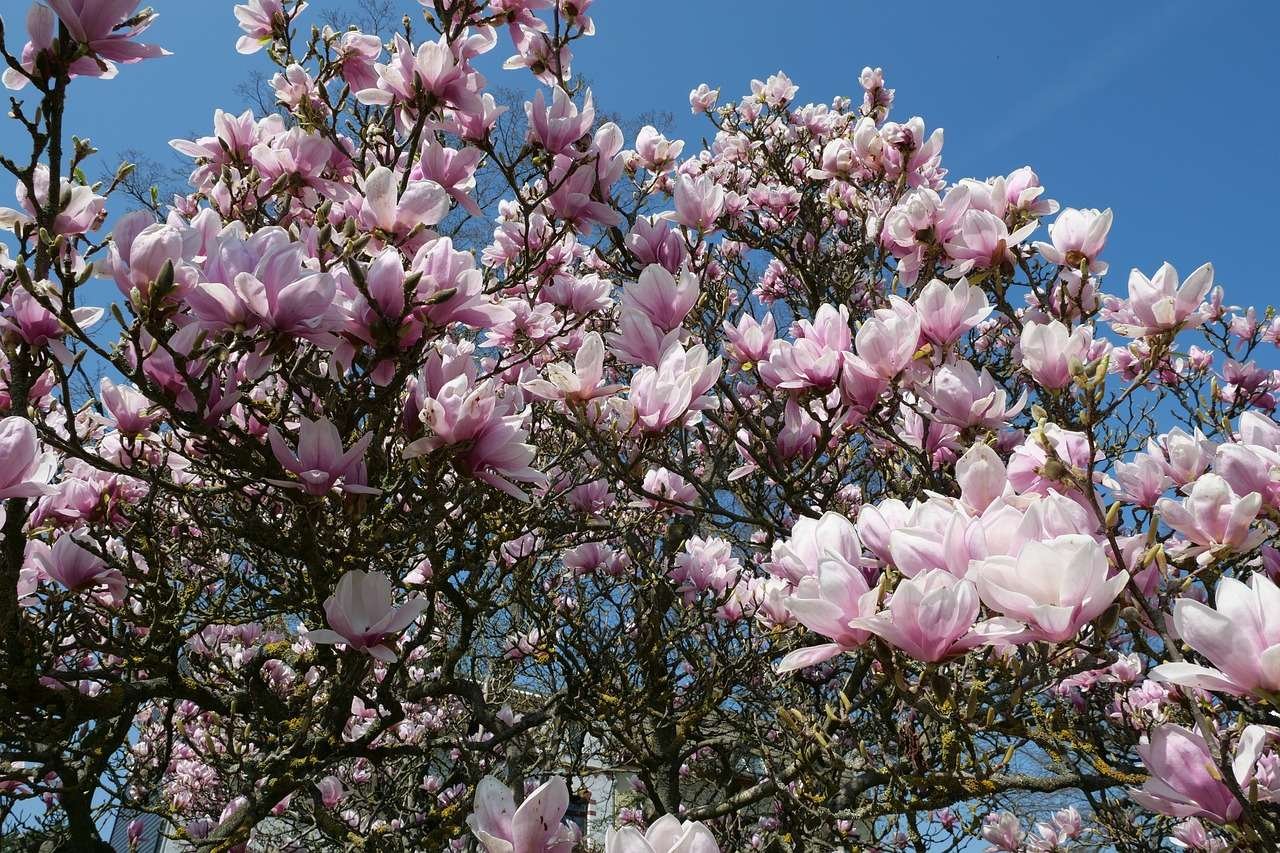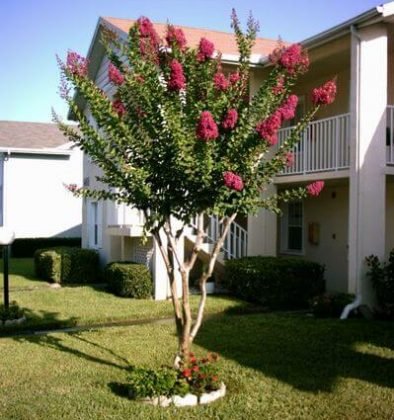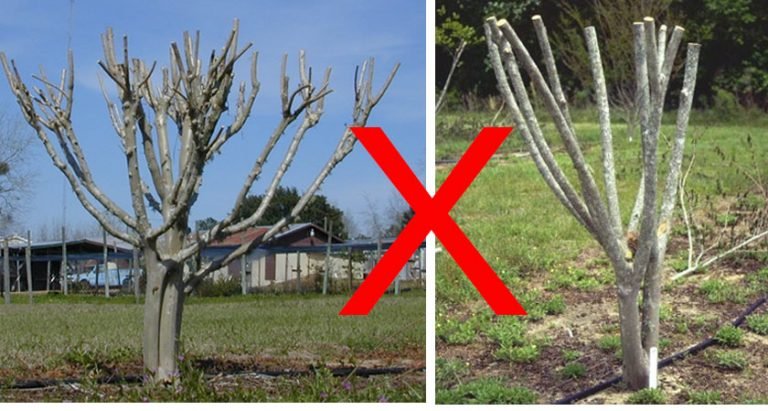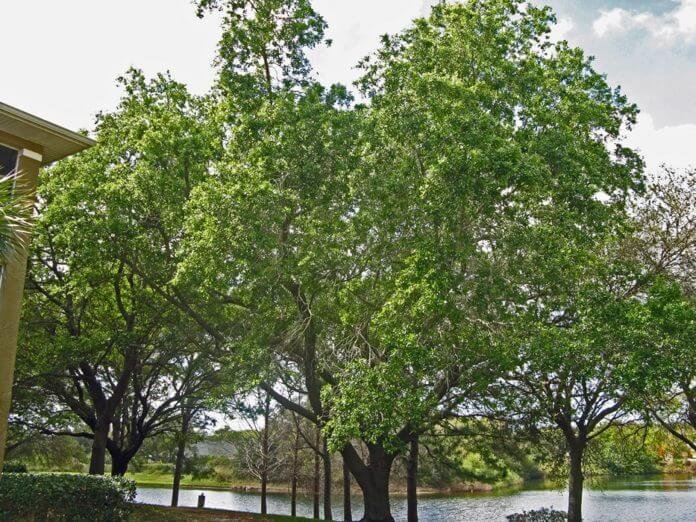Southern Magnolia Tree

Many landscapes throughout different states have the native North American Southern Magnolia Tree in them. With large 8-inch diameter saucer-shaped white flowers and dark green oval shiny leaves, one can see why they are so popular. Blossoms open up in late spring and sporadically during the summer offering showy white color, mixed in with dark green foliage. In the fall and early winter, fuzzy brown cones will ripen producing bright red seeds which are used by various wildlife such as birds.
The Southern Magnolia Tree forms an upright, oval, or pyramidal shape depending upon the variety. Some are dense making for a great screen or shade tree. Others are open with large spaces between branches making for a good garden specimen tree. Some have narrow columnar forms while others are as wide as they are tall.
 Trunks on Southern Magnolia Trees grow straight up through the center of the crown with the lower branches bending towards the ground. Branches are numerous and somewhat small in diameter throughout the tree. Little pruning is required and removal is only needed for those few branches that can become weak, or lower limbs of trees near sidewalks, drives, and streets.
Trunks on Southern Magnolia Trees grow straight up through the center of the crown with the lower branches bending towards the ground. Branches are numerous and somewhat small in diameter throughout the tree. Little pruning is required and removal is only needed for those few branches that can become weak, or lower limbs of trees near sidewalks, drives, and streets.
Southern Magnolia Trees generally grow up to a height of anywhere from 35 ft. up to 50 ft. However, some well-established trees have been known to reach 80 ft. in height. Tree spread is usually between 20 and 40 ft. Some types will only have a spread of 10 to 20ft. The growth rate is generally moderate, some grow slower or faster than others. Height, spread, and growth rate all depend upon the variety and species of each Southern Magnolia Tree. Listed at the end of this article is information on some varieties of Southern Magnolia Trees.
Southern Magnolia Tree Placement
Once established as long as the soil is kept moist and fertile the Southern Magnolia Tree will thrive in full sun and hot conditions. They can be somewhat drought tolerant if placed in areas with enough soil for root expansion, so they can obtain water from other areas that are moist. However, they are not drought tolerant when placed in areas where there is restricted soil, or in poor dry soil on a consistent basis.
Southern Magnolia Trees prefer to be in soil that is acidic but can sometimes tolerate slightly basic or clay soils. They are not as successful if grown in soil that is too alkaline. Magnolia trees need to be fertilized 2 to 3 times a year with a slow release, well-balanced granular tree, and shrub fertilizer.
The root system on the Southern Magnolia Tree is wider spreading than most other trees. The root system can extend well beyond the width of the tree canopy. Make sure when planting Magnolia Trees that there are no roots circling close to the trunk, cut any circling roots prior to planting. Magnolia Trees often do best when planted in late winter and in the springtime. It is not recommended to plant them in the fall.
Southern Magnolia Tree Pests And Diseases
The most common pest found on magnolia trees is scale of various types. Magnolia scales infest the twigs and leaves. White scale is seen especially during the summer months. They can become a problem if left untreated for a long time. Spray applications of horticulture oil can stop them. A regular program of spraying a systemic insecticide is the best for prevention and control.
The Southern Magnolia Tree can be susceptible to diseases such as leaf spot, blight, scabs, and black mildew caused by fungi or bacteria. Treatments of a liquid fungicide need to be applied when present. Raking up infected leaves on the ground can reduce leaf spots from occurring the next year.
Canker disease can affect the branches eventually causing a problem. Affected branches can be pruned out and destroyed. Treatments of a liquid fungicide can be applied to help with control. Diseases can be minimized if trees are kept healthy with regular fertilization and by watering in dry weather.
It is recommended to have a regular program of spraying a liquid systemic insecticide and liquid fungicide for best control and prevention of pests and diseases. Regular inspections can identify problems early before becoming a major infestation.
Types Of Magnolia Trees
Southern Magnolia Tree Varieties for Zones 7A – 10 A
Samuel Sommer
Grows at a moderate rate to a height of 35 to 40 ft. with a 30ft. spread. Forms an upright, oval shape that spreads with age. Has dark green leaves, and flowers in spring. Place in large open areas.
Brackens Brown Beauty
Grows at a moderate rate to a height of 30 to 50ft. with a spread of 15 to 20 ft. The trunk grows straight up through the center of the tree creating an erect narrow oval shape. Branches are short compared to other types and are smaller in diameter. Has a dense uniform growth habit with brown-blackened leaves, and flowers in spring.
Glenn St. Mary
Glenn St. Mary grows at a slow rate to a height of 25ft. with a 10 to 12 ft. spread. Forms a dense pyramidal or tight oval shape with dark green leaves. Lower branches grow upright not bending to the ground like other species. Flowers at an early age. Trees 3 years old often produce numerous flowers. Can be placed in a container or planter, for patios or decks. Flowers in spring.
Hasse
Grows at a moderate rate to a height of 25 to 35 ft. with a spread of 6 to 10 ft. wide. It is usually narrow with an upright or oval shape. It is great for an area where horizontal space is limited. Flowers in both summer and in spring. Has dark green leaves. Can be placed in a container or planter, great for patios or decks.
Little Gem
Grows at a slow rate to a height of 30 to 35 ft. with a spread of 8 to 12 ft. Has a compact upright growth habit typical of a multi-stemmed shrub than a single-trunked tree. Forms a dense oval or pyramidal shape, great for screen or hedge planting. Flowers in spring and can bloom at 2 or 3 years old. Has dark green leaves, can be placed in a container or planter.
Majestic Beauty
Grows at a moderate rate at a height of 40 to 50 ft. with a spread of 20 to 25 ft. Best suited for large properties. Forms an oval or pyramidal shape with lower branches often bending to the ground. Lower limbs can be trimmed. Produces numerous large flowers during spring and has large dark green shiny leaves.
Check your local nurseries for varieties available in your location.
Conclusion
Whether used for screens, shade trees, or as a garden specimen the Southern Magnolia Tree brings natural beauty to any landscape. By displaying large showy white flowers mixed in with dark green leaves Magnolia trees are extremely eye-catching. Their presence will complete any landscape while always complimenting your home.






